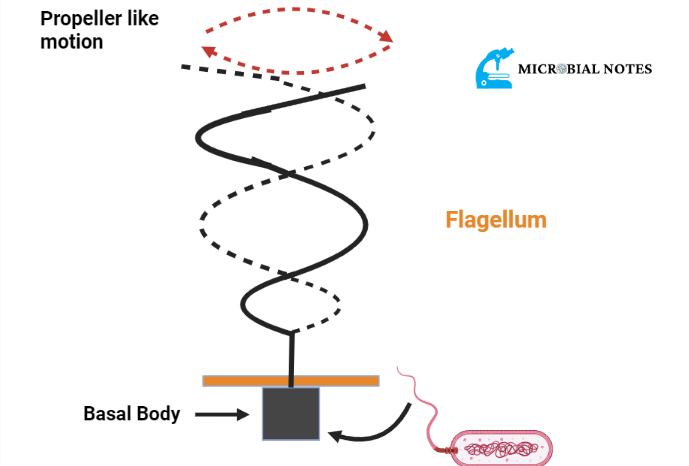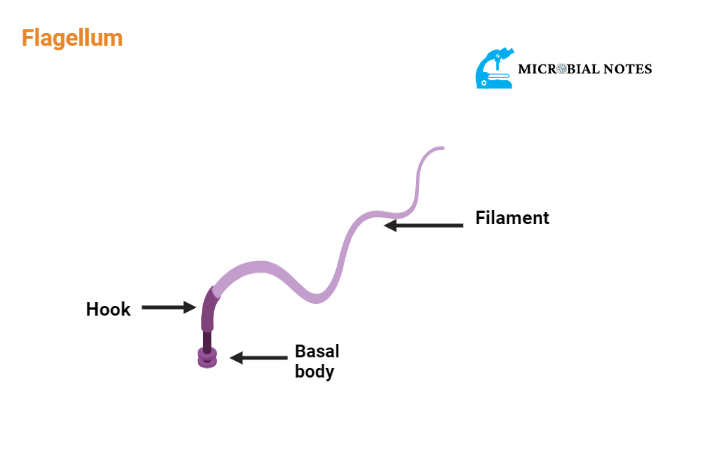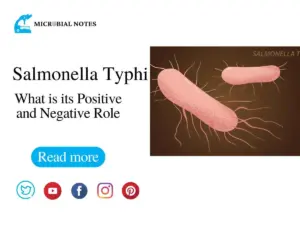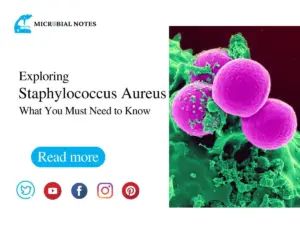Flagella (singular: flagellum) are the microtubule projections of the Plasma membrane or hair like protrusions that is present in almost all types of cells. Flagellum means “Whip”, they have a wip like an appearance. They are typically used to propel a cell through the liquid. They are measured 5-20 micrometers in length and 10-30nm in diameter.
History of flagella
They have been looked at for hundreds of years, with the first observations made in the 1600s. But it wasn’t until the 19th century that scientists started to figure out the structure and function of flagella
In 1837, a German biologist named Theodor Schwann said that all living things were made up of cells. This idea, which became known as the “cell theory,” is still used today. Around the same time, scientists like Matthias Schleiden and Rudolf Virchow also started to study the structures of cells.
In 1855, German biologist Antonie van Leeuwenhoek observed flagella on microorganisms using one of his homemade microscopes. He saw that they moved like whips and suggested that they were used to move. This was the first time that flagella were seen in living things.
Scientists began to learn more about flagella at the end of the 19th century. Edwin Ray Lankester, a British biologist, suggested in 1887 that flagella are made of microtubules, which are a type of protein that make up the skeleton of cells. Later, other scientists, like the American biologist Albert Claude, who used electron microscopy in 1940 to show that flagella are made up of microtubules arranged in a “9+2” pattern, confirmed this.
In the 1950s, the American biologist George Palade used electron microscopy to figure out that the protein dynein is the molecular motor that moves flagella. This discovery was a major step forward in figuring out how flagella move because it showed that the movement is caused by dynein molecules moving together along the microtubules of the flagellum.
In the 1970s, the American biologist Lynn Margulis came up with the endosymbiotic theory. This theory says that the mitochondria and chloroplasts in eukaryotic cells, such as flagella, evolved from ancient symbiotic relationships with prokaryotic cells. This theory is supported by more and more evidence, and the scientific community as a whole agrees with it.
Movement of Flagella
The movement of flagella is powered by a motor protein in the cell membrane. This protein uses energy from the cell’s metabolism to rotate the flagella. This rotation makes the cell move forward or lets it move in a circle or spiral. Some bacteria can also change the way their flagella spin, which helps them move in a coordinated and effective way.
In eukaryotes, Algae use flagella to move and to move their cells into a good position for photosynthesis. Sperm cells use their flagella to move around and move toward an egg cell during fertilization. Some protozoa move with flagella, while others move with cilia, which are like flagella but shorter and more numerous. Both flagella and cilia move in waves that are coordinated by a process called “power stroke.” This allows the cell or organism to move forward. Both flagella and cilia are made of microtubules.

Flagella of Prokaryotic and Eukaryotic cells
Flagella are found both in the prokaryotic and Eukaryotic cells. Flagella have the same diameter as the cilia but the eukaryotic flagella are much longer having a range from one micrometer to several millimeters. The Prokaryotic flagella spin and with help of corkscrew shaped filament, they produce a forward movement. For example, bacterial flagella. Flagella of bacteria are made up of totally different sets of proteins and their action of movement is also different. Bacteria can have one flagellum or several, and they can be either Peritrichous (over the bacteria several flagella are present) or Polar (At a spot one or several flagella are present). The bacterial flagellum is composed of three parts i.e filament, basal body, and hook.
Classification of bacteria on basis of flagella
Atrichous
Bacteria have no flagella.
Monotrichous
Having one flagellum and if it is located at an end it is called a polar flagellum.
Lopotrichous
Have a cluster of flagella at one or both ends.
Ampitrichous
Have a single flagellum at each pole.
Peritrichous
Flagella are distributed over the entire surface of the cell.
Difference Between Prokaryotic and Eukaryotic flagella
| Prokaryotic flagella | Eukaryotic flagella |
| They have rotary movement | They have bending movement ( Back and forth movement) |
| Flagella are thin and small | Flagella are thick and large |
| Do not contains microtubules | Contains the microtubules |
| Made up of the protein flagellin | Made up of the protein tubulin |
| Smaller and simpler structure | The large and complex structure |
| It is proton driven | It is ATP driven |
| They are single stranded | They consist of 11 strands |
| The membranous sheath is absent | Contain a membranous sheath derived from the plasma membrane |
| They consist of three parts basal body, hook, and filament | They consist of two parts basal body and shaft |
| The basal body contains rings that help in locomotion | The basal body is made up of centriole like structures |
| For example, Bacteria | For example, Chlamydomonas (green algae) |
| Flagella are located outside of the plasma membrane | Flagella attached to the cell at the cell membrane through the basal bodies |
Flagella of Sperm cells
Flagella are also found in Sperm cells. The sperm cells have a motile tail which is a long flagellum. They involve the propulsion of cells by a trailing flagellum but sometimes the flagellum has been found to precede the cell.
Flagella functions
- They act as Sensory organs in some eukaryotic cells. They use the flagellum to increase their reproduction rates and also to sense the changes in temperature and pH disturbances.
- They also provide help to an organism in movement.
- Flagella are also used to increase the reproduction rate in a few eukaryotes.
Structure of Bacterial flagella
It consists of three parts:
Filament
It extends from the cell surface to the tip. This is the longest and most obvious portion having a molecular weight ranging from 30,000 to 60,000. It is hollow and rigid and made up of the protein flagellin.
Basal body
It is embedded in the cell and is the most complex part of the flagellum.
Hook
It is slightly wider than the filament and quite different from the filament made up of the different protein subunits.

Structure of Eukaryotic flagella
Flagella have a structure known as Axoneme that is about 0.25 micrometers in diameter. The Axoneme is then connected to a structure known as the Basal body and surrounded by an extension of the cell membrane. The characteristic pattern of the axoneme is that between the basal body and axoneme is a transition zone in which there is an arrangement of the microtubules in the basal body.
The basal body in appearance is similar to the centrioles. It consists of nine sets of tubular structures that are arranged around its boundary. Each tubule set consists of three microtubules, that’s why it is called Triplet. These triplets are interconnected with each other through a structure known as Cartwheel and these triplets are formed by the polymerization of a protein called SAS-6.
References
Oxford University Press. (2019) The cell: A molecular approach.
Hardin, J., Lodolce, J., and Becker’s world of the cell. Pearson.







